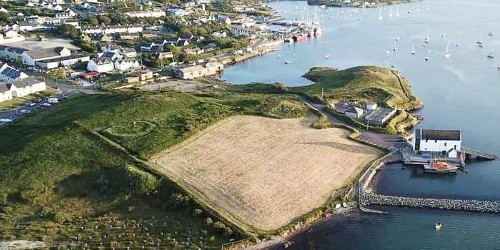Baltimore ringfort (Ráth Dhún na Séad) is sited close to the lifeboat station, overlooking Church Strand. For years it was hidden by a dense undergrowth of ferns and brambles. However, early in 2021 a group of local volunteers cleared the site, making it accessible to the public, and a community group was formed for its protection and management. It consists of a single circular embankment of roughly 73 metres (240 ft) in circumference with a varying diameter of between 19 and 21 metres (62 and 69 ft). The enclosing bank varies in height from almost 2 metres (6 ft 6 in) to as little as 50 cm (20 in). A variety of large stones are visible within and around the fort. Access is via the field adjacent to the lifeboat station. The entrance is marked by a white sign In the southeast corner of the field.

Ringforts were essentially circular enclosed farmsteads that typically consisted of an earthen bank, topped by a timber palisade and surrounded by a ditch or fosse. Entry was usually by a single causeway over the ditch. Within the ringfort itself there would have been a round house of timber construction with wattle and daub walls and a thatched roof, and other structures like animal shelters and corn drying kilns. Ringforts provided for the protection of livestock from cattle raiders and wolves and some of the larger examples were surrounded by multiple banks and ditches. Most ringforts were built between the 5th and 9th centuries AD. However, one archaeologist observed that the Baltimore fort shares features with a Bronze Age fort in nearby Union Hall which means it could actually date from 2000 BC! A geophysical survey of the fort in June 2022 may yield an answer one way or the other.


